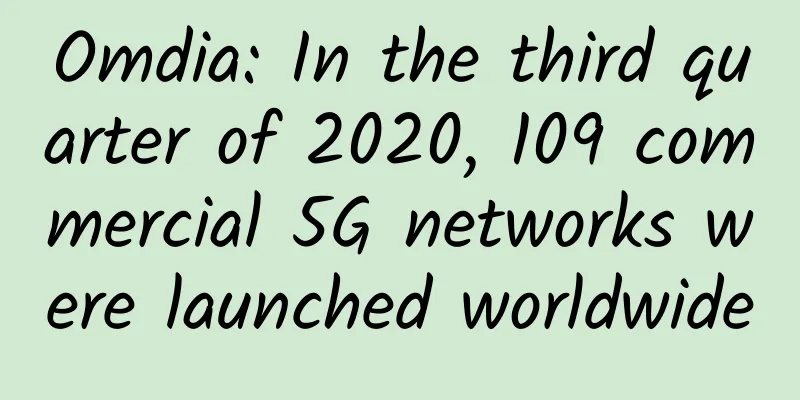Huawei launches OceanStor Dorado V6, a new generation of intelligent storage, explaining how data creates value

|
[51CTO.com original article] Huawei recently released the new generation of intelligent storage OceanStor Dorado V6, adhering to the concept of "data + intelligence" to redefine the storage architecture, and through fast and stable "core" storage to achieve cloud full integration, automation and flash memory inclusiveness, to help build new data infrastructure. At the press conference, Huawei is committed to becoming a leader in intelligent data infrastructure, which is a higher level of leap compared to the previously proposed leader in the storage field. Why did it make such an adjustment? After the meeting, Zhou Yuefeng, vice president of Huawei's IT product line and president of the intelligent data and storage field, gave his own answer.
Responding to the development of the digital economy and allowing data to create value Zhou Yuefeng told reporters that the biggest motivation for Huawei to develop intelligent data infrastructure is that Huawei has realized that the world hopes to achieve mutual benefit and common development in the process of building a digital economy. More importantly, in the digital economy system, the collection, preservation, use and value of data can bring disruptive changes to many traditional industries. For example, the murals of Dunhuang can be restored and presented in a new way through algorithms, and these aspects of data are precisely the advantages that Huawei has accumulated over the past 30 years. "Huawei's accumulated R&D capabilities also need to keep pace with the times and be integrated according to the development of the times and the economy." Zhou Yuefeng pointed out that Huawei has begun to integrate its strong storage R&D capabilities, database R&D capabilities, big data R&D capabilities, and software and hardware engineering R&D capabilities. At the same time, these R&D teams have also been organized together to form a smart data and storage product line. The purpose of the integration is to respond to the development of the digital economy and let data create value. As for how to create value for customers, Zhou Yuefeng also made a more detailed explanation. He told reporters that Huawei found that customers often face some difficulties in the process of digital economic development, such as data storage and access. Different departments have different data storage formats, storage locations and time tags, which makes data analysis difficult, not to mention the integration with business or business perception capabilities. Huawei wants to integrate technology and industry, with both storage and computing functions, using a hardware base such as computing storage, plus Huawei's core databases, big data and other key components, combined with third-party data analysis and usage software, to provide customers with a one-stop solution, and work together to help customers achieve more efficient digital transformation. Find the balance between cost and performance and maintain leading position When asked by reporters about the differences in the focus of domestic and foreign corporate users on all-flash products, Kang Xiaoyu, director of Huawei EBG China IT Solution Sales Department, revealed that in the past many foreign customers focused more on pursuing performance, while domestic users were more concerned about cost, but now it is different. In the past, the amount of core data in the industry was relatively small, but now with the development of informatization and intelligence in all walks of life, the amount of core data of industry customers has exploded. This places high demands on storage performance. If the IT department cannot quickly handle business needs with extreme performance, it may have disastrous consequences for the business. Under such demands, more and more industries choose to stand from the perspective of end-to-end full business and find a balance between performance and cost, rather than unilaterally pursuing the optimal disk cost. "We rely on Huawei's self-developed capabilities, plus self-developed flash memory systems and chips, to provide customers with a better experience for the entire business, bringing better performance and cost reduction. Today, the two are no longer contradictory." Pang Xin, vice president of Huawei's IT product line intelligent storage and data management, added that in the past few years, cost has been a major factor in the slow adoption of the all-flash market, especially in the domestic market. But now industry customers have realized that cost should only be one dimension, and more customers will consider the read and write advantages of all-flash. In the entire all-flash system, its cost, performance and product life are closely linked. Customers hope to find a balance point, rather than purely consider cost issues, which will lead to performance loss. Huawei is more concerned about organically combining media, algorithms, chip capabilities, and OS systems to achieve smarter and more economical speed. "Some people say that Huawei OceanStor Dorado is getting faster the more it is used. The reason is that Huawei has built AI capabilities into the system, allowing it to continuously learn, adjust and optimize, and make the system matching parameters better." He also pointed out that when Huawei combines this speed with the ability to compress the disk, users can get much more capacity than the physical capacity actually purchased. The reporter learned that Huawei Storage has served more than 10,000 core customers so far, and its all-flash products have served more than 3,000 customers. According to the Gartner report, Huawei Storage's shipments rank among the top four in the world, and in the Chinese market, it has consistently ranked first in terms of both revenue and shipments. Especially in the field of all-flash storage, Huawei has the fastest growth rate in the world. The OceanStor Dorado V6 released this time is designed with the Kunpeng 920 high-performance chip and uses the SmartMatrix fully interconnected design, which can fully serve the informatization transformation of all industries and continue to maintain its leading advantage in the future. [51CTO original article, please indicate the original author and source as 51CTO.com when reprinting on partner sites] |
>>: Juniper Networks' "Survival of the Fittest" in the Cloud Era
Recommend
You are still 11 certifications away from being an IT boss
There is a saying that success is not difficult, ...
Google and Qualcomm join forces to fight against Apple. Will the global 5G competition landscape be further changed?
(Original title: Google and Qualcomm join forces ...
Kerlink and Radio Bridge provide LoRaWAN solutions for private IoT networks
According to recent announcements, Kerlink and Ra...
spinservers: $69/month - 2*E5-2630Lv2, 64G memory, 1.6TB SSD hard drive, 1Gbps bandwidth, unlimited traffic
spinservers has released a special promotional US...
2017 Network Technology Outlook: No Breakthroughs, Only Evolution
It has to be admitted that no one can live withou...
Looking forward to the love and hate of IPv6 deployment in the new Internet era
With the explosive development of the Internet, t...
[Black Friday] Launchvps 40% off, 1G memory KVM monthly payment starts from $2.57
Launchvps released a Black Friday discount plan, ...
Germany's attitude suddenly changes, may the new bill exclude Huawei 5G in disguise?
Since 5G was officially put into commercial use i...
Industry leaders discuss 6G vision: intelligent connection of all things, digital twins
As 5G network construction accelerates, related a...
This year's Internet Light Expo has upgraded its black technology: these new gadgets are quite cool
On November 6, the 5th World Internet Conference ...
Industry applications are so attractive, so why can’t we get a taste of 5G networks?
Taking stock of the sources of growth in operator...
6 SD-WAN Challenges and Benefits
Software-defined WAN (SD-WAN) has obvious advanta...
5G is "close" to us, how far is it from you? The Ministry of Industry and Information Technology gives the answer
How long will it take for 5G to become popular? R...
Kurun: $59/year - China Telecom CN2 GIA/China Unicom CUII9929/China Mobile CMIN2 line, 2GB/40GB/500M bandwidth
Kurun was founded in 2019 and is a member of ARIN...
One year after official commercial use! Some people are standing outside the door and watching, but are "influenced by 5G"
[[350111]] Since the issuance of 5G licenses last...









